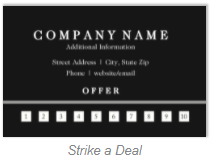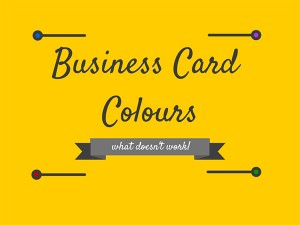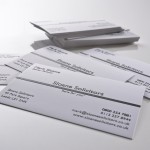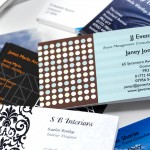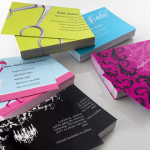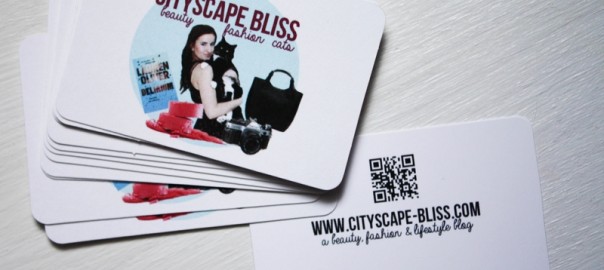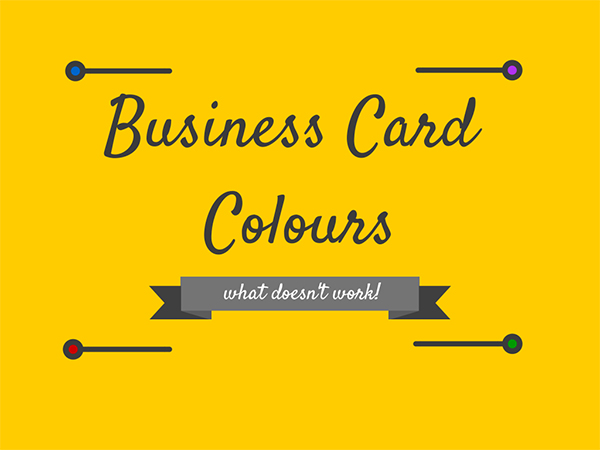It can be a challenging task choosing a font for your new business cards. There are often many options, and it can be unclear what you need to base your choice on.
Should you go for a classic, elegant serif font – or will that come off as old-fashioned? If you choose a more modern or contemporary font style, will your company stand out as fresh and up-and-coming, or will it make you look unprofessional?
The best way to choose a font for your business cards is to choose one that you feel represents you, or your brand. If you have a logo which you are featuring on your cards, it would also be a good idea to make sure your font has similar design characteristics.
You will also need to consider what colour to have your font – this depends again on your brand, logo and what you want to communicate visually with potential customers.
In this article we will select some stylistic fonts and discuss how these would work best on a business card, as well as how to choose a font colour.
The Psychology of Font for Business Cards
In marketing, the font you choose for your business cards (and other marketing material and promotional products) is important. The style of the typeface that you use on your cards can alter how a potential client, customer, colleague or contact will perceive you and your company. In this way, font choice is quite similar to colour, which we’ll touch upon briefly later.
For example: a modern, sans serif typeface will come across as contemporary, fun, and casual. If your company makes children’s toys, this style of font would be perfect – you could also choose a graphic, chunky font that evokes excitement and creates an aura of child-like glee.
But if your company provides financial or legal advice, the above font choice would be a big mistake. It could cause potential clients to take you less seriously, and doubt your professionalism. Instead, you’ll want to go with a simple, sleek and professional font which will make prospect clients trust you.
What Are the Different Types of Fonts?
As a general rule, serif fonts (such as Times New Roman) are perceived as more old-fashioned, dependable, and serious than sans serif fonts (such as Arial). They’re the kinds of fonts you’d likely see in older books and newspapers.
Handwriting-style fonts, such as Comic Sans MS, are the opposite: they’re perceived as very informal, fun, and fresh. They work well for small or casual businesses, such as dog groomers and children’s soft play centres.
Cursive, calligraphy or script-style fonts, like Amadeo and Studio Script, give off a romantic and feminine vibe. They’d be perfect if you’re a wedding planner or florist, for example.
Let’s now go through some examples of popular fonts and when they might be used.
Business Card Font Examples
Here are four of our favourite fonts for business cards, and the impression they might create about you or your business.
1. Avant Garde
Avant Garde is a brilliant font choice for anyone who wants something unique, but still professional. The letter spacing makes it extremely easy to read which is important on a business card.
Without being too bold, the roundness of this font makes text look approachable and it would work particularly well to draw attention to the key information on your business card.
If you have a modern, progressive brand with a fun and contemporary logo, this would be a great font choice for you.
If you feel this is for you, you may enjoy the ‘Fashion’ business card template for its modern, bright design.
2. Century Schoolbook
Century Schoolbook is the perfect example of a professional, easy to read serif font. This typeface is bold but without the chunky letters usually associated with standout font.
Although the style is similar to more commonly used fonts, it is a fantastic business card font choice for those looking to make their cards unique than, say, Times New Roman.
This font would work well for any professional brand, especially if you have a sleek, elegant logo. Choose a font like this for a company that needs to be taken seriously, such as an accounting firm or a solicitor.
If your brand fits this category, you may want to look at the simple yet elegant ‘Solid Black’ business card template.
3. Courier New
Courier New oozes simplicity. This typeface, which bears resemblance to typewriter font, is minimalistic in the best way. It is extremely clear and will stand out against any background.
This is a brilliant font to use for business cards as it merges playful and elegant perfectly. If your brand uses a to the point, minimal logo, Courier New would be one to consider.
For a brand with this aesthetic, the ‘Swoosh’ business card template could be a good fit.
4. Bauhaus
If you are looking for a fun and funky business card font that is still readable, Bauhaus would be an excellent choice.
It’s distinctive, striking and yet it still comes across as professional. It’s boldness means it would read clearly, even against a coloured background.
Bauhaus would make a brilliant business card font for anyone whose brand is quirky, eccentric, and fun, and would complement a bright logo.
No logo? Bauhaus would compliment the ‘Unique Antique’ business card template.
Which Font Should I Choose?
If you’re having trouble choosing, there is nothing wrong with going for a traditional and well-known typeface for your business cards. For example, Ariel or Times New Roman. They’re both classic, professional fonts that would work for almost any brand and logo.
You don’t have to go the “unique” angle if you’re worried about what your chosen font will say about your business. You can always make your business cards stand out in other ways, such as through use of colour, orientation or clever image placement.
You could also consider looking at other brands, and consider how they use font to communicate with potential customers. If you find an example that you enjoy, you can try out a similar font on your business card.
What Font Colour Should I Choose for My Business Card?
Don’t forget about colour! On a business card, it is important that all the information can be read clearly. If your clients and customers have to put in extra effort to read your information, they may not bother, and will pick up a competitor’s card instead.
It’s best to go for a font that contrasts well with your background. If your background is white or cream, a classic and professional choice would be a dark colour such as black, graphite, or navy.
If your business card has a dark background, however (such as ‘Strike a Deal’), white (or another very light colour) would be the obvious choice.
If you do choose to go with another colour, make sure it contrasts strongly enough with the background to show up clearly on your card. As well as this, it would be best to select a colour that will accent your logo if you have one.
What Does Font Colour Tell Customers About My Business?
The psychology of colour is very interesting, and brands use colour all the time to tell their audience about their product or company. For example:
1) Black symbolises formality and sophistication
2) Purple oozes luxury and royalty
3) Red gives off an aura of energy and excitement
4) Green comes across as fresh and natural
5) Blue is a calm colour that signifies trust and honesty
6) Yellow represents fun, happiness and creativity
7) Pink symbolises love and emotion
8) Brown denotes toughness and simplicity
Where Can I Buy Business Cards?
At 123Print you can completely customise your own business cards to suit the experience you want potential customers to have. As well having a choice of 32 fonts and thousands of custom colours, you can also upload your own artwork and logo to make the card completely your own.
If you are not feeling so creative, you could have a look through our massive range of business card templates. All templates can still be customised so you can add your own personal touches to the design, and edit the font and colour to your liking.
You can order business cards with 123Print stress-free in the knowledge that we have a 100% customer satisfaction guarantee. Our 48-hour dispatch time and low price point means you can receive your order of high quality business cards quickly and cheaply.
